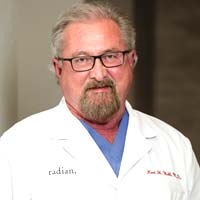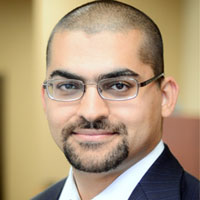What is Hair Restoration?
Hair restoration, in general terms, refers to hair loss treatments of
various types. However, we know there are no effective medications to
cure baldness completely; rather they only help arrest hair fall to
certain extent, so the term hair restoration would find no meaning in
the context of medications. In today’s scenario, hair restoration best
describes different types of hair transplants that help you restore your
natural hair through surgical procedure.
Hair Restoration Techniques
Follicular
Unit Extraction (FUE) is the most popular hair restoration technique
practiced by hair transplant surgeons. In FUE, individual follicles of
hair are removed under local anesthesia. Each hair follicle is then
transplanted on the thinning area using special devices. Unlike the
strip method that removes a strip of scalp with healthy hair follicles,
FUE extracts individual hair follicles, so only small punctate scar
remains on the scalp. No surgical or post-op treatment is required, and
the person can resume normal activities the next day of hair transplant.
The success of any hair restoration technique lies in the
expertise of the hair transplant surgeon. Proper extraction of hair
follicle is of paramount importance to avoid transection. Since hair
follicles grow at a slight angle to the skin’s surface, not
perpendicular, the transplant tissue must be removed with a
corresponding angle and not perpendicular to the surface.
The
biggest challenge for hair restoration surgeons is to reduce transection
rate. According to John P. Cole, a pioneer in FUE hair transplants,
even expert physicians performing FUE hair transplant can sometimes
damage as much as to 10-20 percent of the donor hair permanently,
creating a visible “thinning” effect to donor areas. Cole claims he has
developed a set of patented tools to decrease the damage to donor hair
areas, and has achieved an impressive transection rate of under 3
percent.
Hair transplant surgeons use devices like NeoGraft to
harvest hair follicles. Neograft uses an automated machine that has a
rotating punch that cuts around the hair follicles to separate hair from
surrounding attachments. A vacuum component sucks out the graft by
forcing it through a small conduit tube. The hair is then stored in a
solution at the end of the tube. This hair is grafted in to the
previously made slits on the bald areas. Of late, a new technique
called ARTAS is gaining popularity for hair transplants. ARTAS is a
minimally invasive solution for permanent, natural looking hair. The
process involves transplanting healthy follicles to the patient's scalp
most affected by baldness with the help of robots. The procedure is
minimally invasive and utilizes sophisticated digital mapping and
precision robotics to deliver beautiful, natural looking results.
FUE
hair restoration is the best way to treat androgenic alopecia, also
known as male pattern baldness. The benefits are many: it is
non-invasive and gives a natural looking hair line. However, FUE is
costlier than the strip method, making it affordable to elite class.
However, with the emergence of supporting
technologies like ARTAS that simplify the effort of surgeons, hair transplant is expected to become cheaper.
Posted in
Hair Transplant by:
Sang Ale
2012-10-04 | Hairfear
Frequently asked questions about hair transplant procedures
How much does a hair transplant cost?
Hair transplants can vary in price based off of the area in the world that you are interested in getting a hair transplant as well as the size of the area where you may need a hair transplant. Experienced doctors in the United States will often charge some of the highest prices for a hair transplant worldwide and this is why so many travelers make the move to other parts the world like Turkey, India, Thailand, Mexico...etc for their hair transplants.
Will a hair transplant hurt?
Although hair transplants may look like a particularly
unpleasant or painful experience is actually very little discomfort involved
with the surgery itself. Hair transplants are always done under an anesthetic so there's absolutely zero pain during the treatment itself. Many people actually relate the process as being very similar to going to the dentist for filling or root canal. Mild pain can persist over the course of postop treatment but he generally just resumes for a few days.
Who can deliver the best surgery?
It's usually best to consider working with surgeons who have and IAHRS certification or international alliance of hair restoration surgeons recognition. IAHRS can often deliver recommendations for the best surgeons in each particular area.
Is this scarring noticeable?
Any type of hair transplant will require the use of incisions throughout the scalp. There can also sometimes be a small scar from the donor area towards the back of the scalp. Asking to look at photos of the surgeon's previous work will help you to see roughly how bad the scarring could be. In most cases an experienced professional can limit the look of scarring and noticeable marks from the surgery.
How long does it take for the hair to grow?
In most cases hair growth will start within eight months and you can start to see a full effect from the hair transplant after a full year. The initial signs of growth can usually start between 3 to 4 months after the surgery.
Are the results permanent?
The hair follicles that are transplanted are generally the ones which are genetically resistant against the symptoms of baldness. As long as you receive hair loss treatment later in your life after the symptoms of balding have started to subside, you can have a better chance at permanent results.
While everyone know you've had surgery?
If you want to limit the chance that people may find out about your surgery it's important to give at least three weeks of healing as the surgical area will be affected and red just after surgery. After around a month of healing it can look far less noticeable. You could consider wearing a hat while time passes or opting for some extra time off if possible.
How long should I rest after surgery?
It's recommended to rest for at least a few days after surgery so that your body can recover. Trenton to over exert yourself and limit sexual activity, running in the gym for around 10 days after surgery.
Is it possible to lose more hair as a result of surgery?
There is always a chance of shock loss which happens when the hair is weak and miniaturizing after the surgery. As long as the surgeon is choosing the correct hair follicles and performing the surgery well it's possible to minimize the chance of this happening however.
Will I need another hair transplant?
The need for another transplant really depends on the individual. With a solid foundation surgery and working to potentially bolster results with drug therapy, you can improve the stability of the hair that was transplanted as well as prevent further loss. Getting a hair transplant early
on in your 20s or early on in life could lead to needing long-term transplants as hair loss can be progressive.







